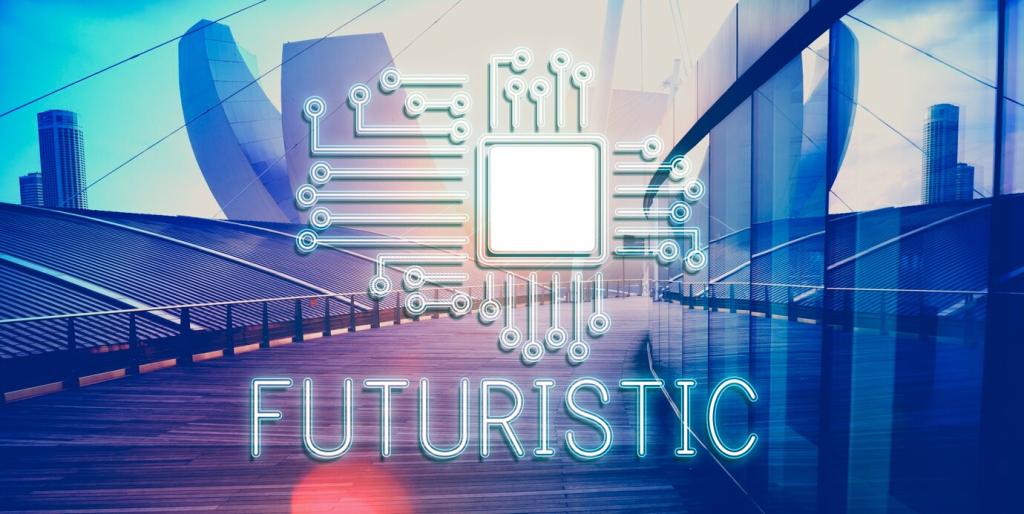Innovative Smart Home Design Trends
Smart home technology has significantly evolved in recent years, seamlessly blending aesthetics, functionality, and energy efficiency. Modern homeowners are not just seeking convenience; they demand intelligent solutions that adapt to their lifestyles and anticipate their needs. From voice-activated systems to sustainable materials and adaptive environments, the latest trends in smart home design push the boundaries of comfort and innovation. Discover which forward-thinking directions are reshaping the way we live, interact, and experience our homes.


Discreet Smart Controls
Switches, wires, and bulky gadgets can disrupt a room’s aesthetics. Today’s approach hides smart elements within walls, furniture, or even artwork. Touch-sensitive surfaces and gesture-controlled panels are cleverly incorporated, allowing residents to control lighting, climate, and entertainment with barely noticeable design features. This level of sophistication ensures homes remain both elegant and highly functional, blending artistry with accessibility.

Invisible Audio-Visual Solutions
Cutting-edge smart homes use audio-visual setups that appear only when needed. Speakers are built into ceilings or furnishings, and projectors disappear when not in use, creating a minimalist aesthetic free from clutter. Occupants enjoy immersive experiences without sacrificing their home’s visual harmony, as technology serves to enhance rather than dominate the décor.
Sustainable Smart Living
Intelligent Energy Management
Advanced sensors and learning algorithms now enable real-time monitoring of energy usage patterns. Smart thermostats and lighting systems adjust automatically based on occupancy and time of day, optimizing efficiency. Homeowners can track energy consumption through detailed reports, empowering them to make informed decisions that lower utility bills and carbon footprints.
Eco-Conscious Materials
Sustainable smart homes emphasize the use of recycled and non-toxic materials. Bamboo flooring, reclaimed wood cabinetry, and low-VOC paints are paired with intelligent systems for air and water purification. Designers and builders collaborate to ensure the entire living space promotes health and minimizes environmental impact, setting a new standard for eco-friendly living.
Water Conservation Solutions
Water scarcity has inspired innovation in smart water management. Homes now feature intelligent irrigation, leak detection, and moisture sensors that optimize water use inside and out. These systems prevent waste and encourage sustainable habits. Users benefit from lower water bills while contributing to broader conservation efforts, demonstrating that luxury and responsibility can coexist.
Personalized Automation and AI
Gone are the days of manual adjustments. Smart homes equipped with AI use sensors and data analysis to anticipate user needs. Lights brighten or dim according to mood, activity, or natural sunlight, while climate control adapts to personal schedules. The result is a living space that feels intuitive, welcoming, and perfectly attuned to its occupants’ rhythms.
From circadian lighting to ambient soundscapes, AI can personalize aspects of a home for optimal wellbeing. Sensors track air quality, humidity, and noise, automatically adjusting conditions for restful sleep or focused work. Advanced health monitoring systems integrate seamlessly into daily routines, supporting holistic wellness through thoughtful design and responsive technology.
Home security has become smarter and more customized, integrating AI to recognize regular behaviors and detect anomalies. Systems can differentiate between family members, guests, and potential intruders, allowing for precise alerts and tailored responses. Automation means locks, cameras, and alarms work together intelligently, providing peace of mind without sacrificing style or privacy.
Voice-Activated Living Spaces
Smart speakers and integrated microphones enable users to issue commands, ask questions, and control appliances intuitively. Ongoing improvements in voice recognition technology help systems understand context, respond to complex instructions, and even converse in multiple languages. These centers serve as a personalized home concierge, ready to assist at a moment’s notice.
Previous
Next

Dynamic Room Configurations
Integrating motorized partitions and modular furniture, smart homes support quick transformations between open-plan living, private offices, or home gyms. Automation remembers user preferences, adjusting layouts and lighting with the touch of a button. This flexibility ensures every square foot is used efficiently, adapting as family routines change over time.
Smart Furniture Design
Innovative furniture is embedded with technology for charging devices, wireless communication, and adaptive comfort settings. Adjustable beds, desks, and sofas adjust automatically based on activities, posture, or time of day. These pieces are as beautiful as they are practical, merging form and function for the ultimate in modern living.
Hybrid Home Office Solutions
As remote work becomes a permanent reality, smart homes offer built-in office spaces equipped with intelligent lighting, soundproofing, and integrated video conferencing. These features support productivity while allowing for seamless transitions between professional and personal environments. Designers are rethinking home offices as adaptive, inspiring spaces powered by the latest technology.
Wellness and Biophilic Design
Smart Air and Water Filtration
Leading-edge smart homes utilize sensors and AI-driven systems for continuous monitoring and filtration of air and water. Residents enjoy cleaner environments as these solutions automatically adapt to pollution levels, allergens, and usage patterns. This constant regulation promotes a healthier lifestyle while ensuring optimal efficiency.
Indoor Green Spaces
The latest trend transforms interior spaces with integrated planters, living walls, and even automated garden systems. Smart irrigation and lighting maintain plant health with minimal effort from homeowners, infusing living areas with oxygen and a sense of tranquility. Designers collaborate with botanists and tech experts to weave biophilia into the very fabric of the home.
Circadian Lighting Systems
Lighting plays a crucial role in our wellbeing. Smart circadian lighting mimics natural daylight, automatically adjusting color temperature and intensity to support residents’ sleep-wake cycles. These systems enhance mood, concentration, and overall health, reinforcing the synergy between technology, design, and nature.
Immersive Entertainment Environments
Personalized Cinema Experiences
Smart theaters use motorized screens, adaptive acoustics, and intelligent lighting to create a bespoke movie night. AI can recommend films based on user preferences and adjust room settings for the perfect audiovisual immersion. This tailored approach makes every screening special, whether hosting friends or relaxing solo.
Interactive Gaming Spaces
Next-generation gaming rooms are equipped with haptic feedback floors, AR/VR integration, and customizable soundscapes. Smart sensors respond to player movement and preferences, creating an engaging, responsive environment. Players experience deeper immersion, blurring the line between virtual and real, driven by technology that’s seamlessly woven into the design.
Multi-Room Audio Systems
Music follows you throughout the smart home, thanks to synchronized wireless speakers managed by intuitive apps or voice commands. Whether entertaining guests or unwinding alone, users enjoy rich sound tailored to every room’s acoustics. The system can adapt playlists based on activity or mood, proving that technology delivers both convenience and high-fidelity enjoyment.
